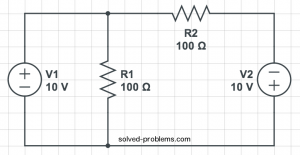What’s up? We are going to have fun!
This is our first contest for electrical circuits. Solve the problem, submit your answers and cross your fingers to be the lucky winner!
Tag: Source
-
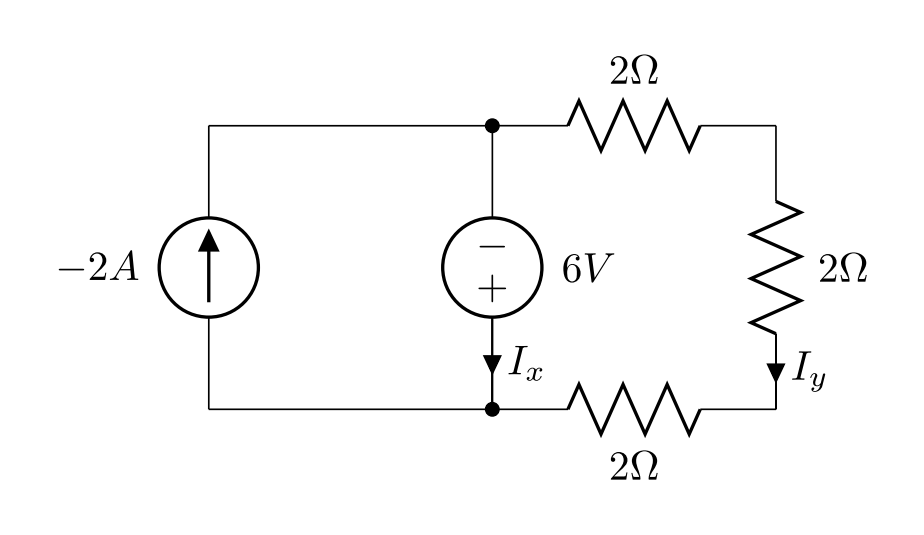
Electrical Circuit Contest – Win $10!
-
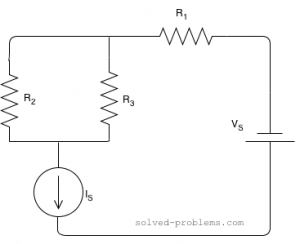
Mesh Analysis – Supermesh
Solve the circuit and find the power of sources:

 ,
,  ,
,  ,
,  ,
,  ,
,  .
.Solution:
There are three meshes in the circuit. So, we need to assign three mesh currents. It is better to have all the mesh currents loop in the same direction (usually clockwise) to prevent errors when writing out the equations.
(more…) -

Solve By Source Definitions, KCL and KVL
Find the voltage across the current source and the current passing through the voltage source.
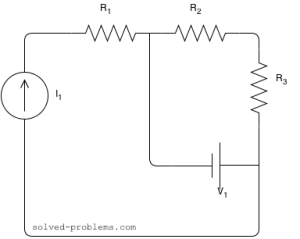
Assume that ,
,  ,
,  ,
,  ,
, ,
,  ,
,Solution
 is in series with the current source; therefore, the same current passing through it as the current source:
is in series with the current source; therefore, the same current passing through it as the current source:
(more…) -
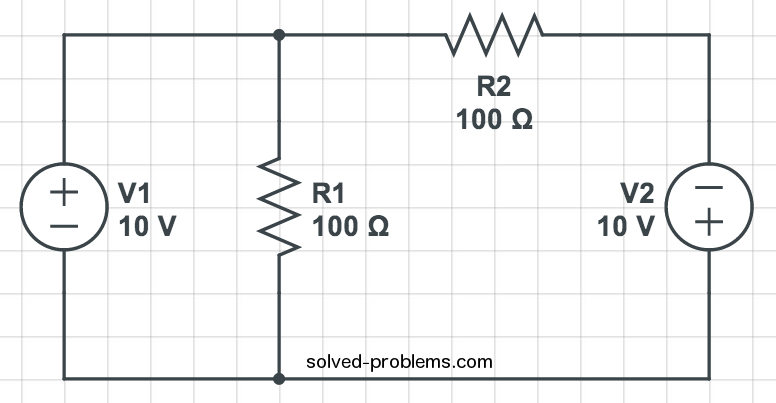
Find currents using KVL
-

Turning Sources Off
Turning off a source, which is usually used in solving circuits with superposition method, means setting its value equal to zero. For a voltage source, setting the voltage equal to zero means that it produces zero voltage between its terminals. Therefore, the voltage source must insure that the voltage across two terminals is zero. Replacing the source with a short circuit can do that. Thus, voltage sources become a short circuit when turned off.
For a current source, setting the current equal to zero means that it produces zero current. Therefore, the current source must insure that no current flows through its branch. An open circuit can do that. Hence, to turn off a current source it should be replaced by an open circuit.
How about dependent sources? The voltage/current of a dependent source is dependent on other variables of the circuit. Therefore, dependent sources cannot be turned off.
Example I: Turn off sources one by one.

Example 1 Solution:
I) The voltage source:
Turning off the voltage source
(more…) -
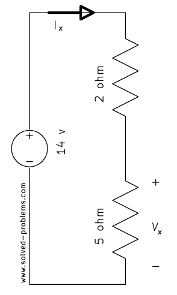
Ideal Independent Sources
1) Ideal Independent Voltage Sources
An ideal independent voltage source is a two-terminal circuit element where the voltage across it
a) is independent of the current through it
b) can be specified independently of any other variable in a circuit.
There are two symbols for ideal independent voltage source in circuit theory:
Symbol for Constant Independent Voltage Source
(more…) -
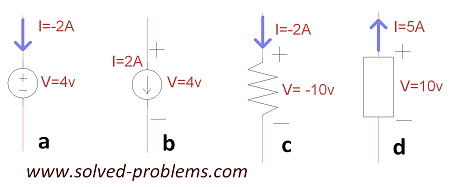
Problem 1-1: Power of Elements
Find the power of each element. Which one is supplying power and which one is absorbing it?

Solution
a) Passive sign convention,
 supplying power.
supplying power.
(more…)
